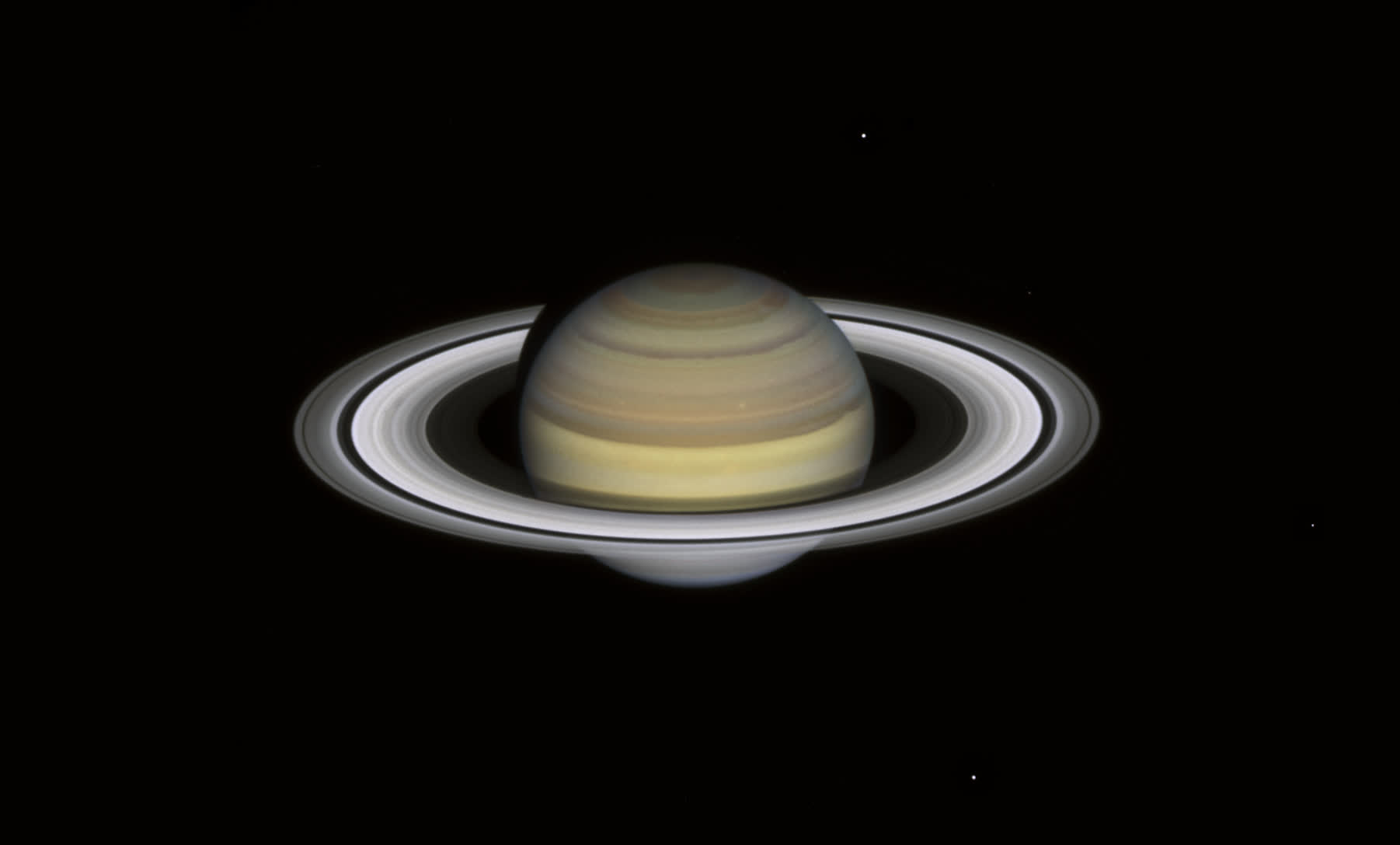Check out Hubble's annual tour of the outer solar system
What but happened? The venerable Hubble Infinite Telescope has completed its annual bout of the outer solar system, providing curious onlookers here on Earth with withal another set of stunning images of a grouping of planets collectively known as the gas giants.
Hubble's tour, office the Outer Planets Atmospheres Legacy program, or OPAL, starts with Jupiter. This year'southward prototype, captured on September 4, highlights the planet'due south tumultuous atmosphere and reveals several new storms taking shape. The planet'southward iconic Great Red Spot, however, persists.

Hubble provided a new expect at Saturn on September 12. Here, nosotros can encounter extreme color changes in the bands at the planet's northern hemisphere which reflect a seasonal shift into autumn. Saturn's hexagonal storm at the north pole is over again conspicuously evident, but information technology's really the rings that have historically fascinated skygazers.
The shot of Uranus was snapped on October 25 and is an fantabulous example of what the far-abroad planet looks like every bit information technology experiences springtime in the northern hemisphere. The brightening of the polar region is believed to be caused by the increase in ultraviolet radiation absorbed from the Lord's day.
Hubble's September seven photo of Neptune looks a lot like what Voyager two saw in 1989 – that is, a distinct blue color with a single large dark spot. The blue colour, NASA notes, is the outcome of the absorption of red light past the planet's methyl hydride-rich atmosphere combined with the aforementioned Rayleigh-handful procedure that makes our abode planet'due south sky blue.
Source: https://www.techspot.com/news/92307-check-out-hubble-annual-tour-outer-solar-system.html
Posted by: clementsenty1997.blogspot.com


0 Response to "Check out Hubble's annual tour of the outer solar system"
Post a Comment